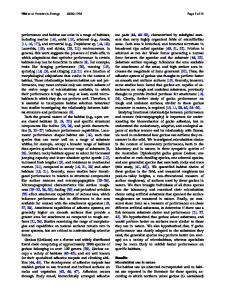Emissivity of Rough Silicon Surfaces: Measurement and Calculations
- PDF / 350,061 Bytes
- 6 Pages / 414.72 x 648 pts Page_size
- 100 Downloads / 357 Views
ABSTRACT The directional reflectance and approximate emissivity of rough silicon wafers were measured by reflection measurements using a single point detector and a broad area illumination source. Experiments were also performed to determine the cone angle of the incident light required to properly measure the emissivity of rough backsides. Based on surface roughness parameters acquired with an Atomic Force Microscope, reflectance calculations were performed within the framework of the Beckmann-Spizzichino model. The results are qualitatively consistent with experimental observations. INTRODUCTION The rapid and practical measurement of the emissivity of rough wafer backsides is important for RTP applications. As the emissivity depends on many parameters which generally vary during the processing, it is critical to measure the emissivity in situ. Such in situ measurements have been made possible by the recently developed ripple technique [1, 2]. With this technique, the reflectance of a surface and the thermal radiation can be simultaneously measured. These two quantities can then be used to infer the emissivity and temperature [3]. In contrast to a polished surface, to measure the emissivity correctly for a rough surface, ideally an extended probe beam with constant radiance covering the whole hemisphere over the sample is needed [3]. However, in real RTP systems, such an ideal scheme is impossible to realize. Instead, it is always replaced with extended probe beams with a solid angle smaller than that of an hemispheric light source, which is 27t. As a result, the measured reflectivity is only an approximation of the hemispheric reflectivity. Presumably, as the surface becomes rougher, a larger solid angle of the probe beam is required to make the measured reflectivity a good approximation of the hemispheric reflectivity. For both practical and fundamental reasons, it is very important to find out how the required solid angle changes as the roughness changes. In this work, we have done a series of surface reflectance and Atomic Force Microscope (AFM) experiments. The experimental observations, together with reflectivity calculations, indicate that, when a proper measure of the surface roughness is used, both the required probe beam solid angle and the approximate emissivity increase as the surface becomes rougher. REFLECTION MEASUREMENT AND ROUGHNESS CHARACTERIZATION In the reflectance measurement, the reflectance of both polished and rough sides of silicon wafers were measured as a function of the probe beam solid angle. Fig.1 shows the schematic of the experimental set-up on an optical table. A frosted flood lamp with a 12 cm diameter was used as an extended probe beam. The lamp was covered with a white cloth to make the light more like a "gray body", i.e., a diffusive light source. Optical measurements indicate that the light from the lamp is quite diffusive and the radiance variation from the center to the edge is -20%, with a brighter center. In the reflection result to be shown later, such radial variation of
Data Loading...









